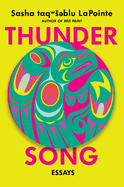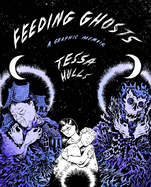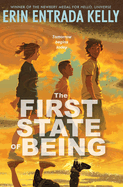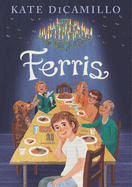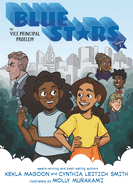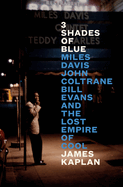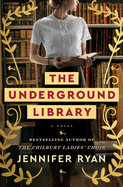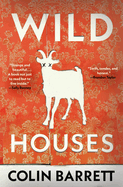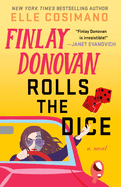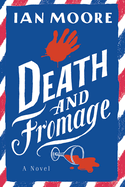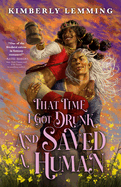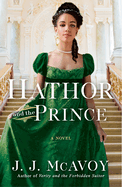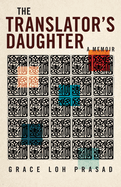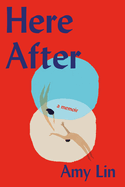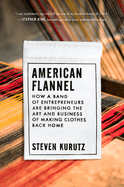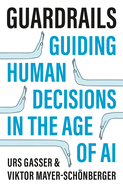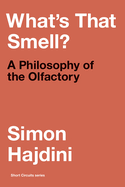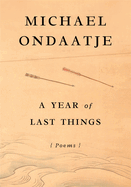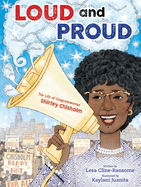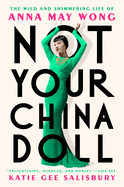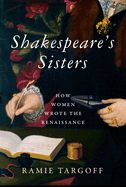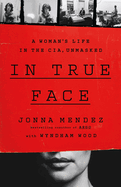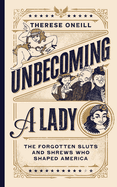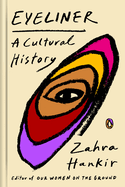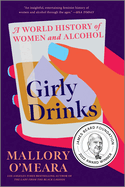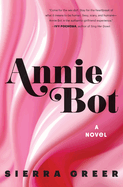Friday, March 22, 2024
This week, we review Feeding Ghosts: A Graphic Memoir by Tessa Hulls, which considers "the nesting-doll lives of three generations" of Chinese American women and "brings into clear focus the ever-shifting complexities of mother-daughter relationships"; as well as Thunder Song by Sasha taqʷšəblu LaPointe, who "skillfully sifts through the past, present, and the unraveling future, drawing from the different branches of her identity as a punk, queer Indigenous woman." Plus, The First State of Being by Erin Entrada Kelly, who "has written one of the kindest boys in children's literature" for this "buoyant and entertaining" middle-grade novel about time travel. And more!
In The Writer's Life, learn which book felt like a time machine to Christina Hwang Dudley, author of Pride & Preston Lin, and where she went on a "literary dream tour" with her daughters.
The Morningside
by Téa Obreht
Téa Obreht (The Tiger's Wife; Inland) is a wildly inventive magician of a writer, every performance new and wonder-inducing, every book a distinctive blend of realism and fantasy. The Morningside enters the same world as the author's short story of the same name, but the novel is a weightier thing. It teases out the strands of truth and secrets that circle the narrator, Sil, who moves with her mother to the Morningside building when she is 11.
Their presence in Island City is due to the Repopulation Program, an effort to save the once-great city, much of which is now under water. Sil's aunt Ena serves as the super for the mostly uninhabited apartments at the Morningside who welcomes them in. There are familiar elements, notes of wildfires and refugees and rising sea levels, but this is a novel about people and their histories and the truths they might choose to withhold or even create.
Where Sil's mother has revealed almost nothing about their past, Ena opens Sil to a world of family stories, mythologies, and magic. With this knowledge of "a world underneath the world," Sil fixates on Bezi Duras, the elusive painter who lives in Morningside's penthouse, becoming convinced that she is actually a Vila, a fairylike creature, whose dogs transform into men each day and back to dogs at night.
Reminiscent of Harriet the Spy, Sil attempts to discover incontrovertible evidence of her truth, and in the process learns more than she could have imagined, about her mother, their past, and about what happens when a person is ruled by a need for secrecy. --Sara Beth West, freelance reviewer and librarian
Discover: Téa Obreht takes readers on an inventive tour inside The Morningside, a once-great apartment building full of magic, mystery, and the remnants of a city in decline.
The Underground Library
by Jennifer Ryan
Jennifer Ryan's charming fifth historical novel, The Underground Library, centers on London's Bethnal Green Library, which operated out of the neighborhood's tube station during the Blitz of 1940. Ryan weaves together the stories of Juliet, the spirited deputy librarian; Sofie, a German Jewish refugee struggling to build a new life; and Katie, a young library assistant who finds herself in desperate circumstances. The resulting narrative is an inspiring portrait of neighbors pulling together in tough times and a heartwarming tribute to the ways books can connect and sustain.
Ryan (The Kitchen Front; The Chilbury Ladies' Choir) alternates among her three characters' perspectives, sharing Juliet's determination to make the library a community hub; Sofie's search for news of her family; and Katie's grief for her missing soldier fiancé, Christopher. Each of the women finds solace at the library, even after the Nazis start dropping bombs, and all three step up to help the library continue its work. Juliet starts a reading club and joins the volunteer ambulance service, and all of them learn to make the best of a trying situation--even if it involves sleeping in the tube station most nights. When each of the women finds themselves in crisis, the library, through its books and its patrons, provides comfort and inspiration, and it helps all three women (and their neighbors) imagine a way forward.
Based on true events, Ryan's novel is a plucky, can-do narrative of female friendship, grit in wartime, and (of course) the enduring power of books. --Katie Noah Gibson, blogger at Cakes, Tea and Dreams
Discover: Jennifer Ryan's heartwarming fifth novel centers on a London library that moves underground during the Blitz and the brave, kind women who keep it going.
The Divorcées
by Rowan Beaird
Rowan Beaird's first novel, The Divorcées, draws readers into a singular historical time and place: the so-called "divorce ranches" surrounding Reno, Nev., in the 1950s. State laws allowed for quick and painless divorce--an exception at the time--for Nevada residents of just six weeks. In Beaird's lushly imagined novel, Lois has chosen to leave a loveless marriage. She travels from Chicago to Reno, where she is installed at the Golden Yarrow with a handful of women like her, putting in their six weeks before being able to divorce: young to middle-aged, with some financial security but limited options, choosing to leave husbands who have been unfaithful, abusive, or simply disappointing.
Among these women, Lois has the unprecedented experience of making friends and forming bonds, eventually with one woman in particular. Greer Lang is beautiful, forceful, magnetic, and she seems to think Lois is special, too. Under the spell of this connection, Lois blossoms into a new version of herself, empowered and titillated. At the Golden Yarrow, she sees "the marks of men" on abused women and imagines other possibilities, paths at the ranch "cracking open to her like different branches of a tree."
Beaird's writing is lovely, and her protagonist is perceptive: "Perhaps [young girls will] learn something none of the ranch's guests had until after they were wed, and be better for it." The Divorcées is tender and compassionate, wise and incisive, and gorgeously rendered, even in heartrending moments. Lois's journey of growth and exploration forms an unforgettable debut. --Julia Kastner, librarian and blogger at pagesofjulia
Discover: In this sparkling, lushly imagined first novel set on a "divorce ranch" outside 1950s Reno, Nev., women yearning for simple freedoms forge bonds that offer new hope and new dangers.
Wild Houses
by Colin Barrett
In his story collections, Homesickness and Young Skins, Colin Barrett, who grew up in County Mayo on Ireland's west coast, demonstrated an affinity for writing about the lives of the inhabitants of that region. It's not surprising then that in Wild Houses, his first novel, he's returned to his home turf with a brisk, engaging tale of a small group of dubious characters who'd be at home in one of Martin McDonagh's darkly comic films.
The action of the novel unfolds over the course of a weekend in the small town of Ballina, hosting its annual Salmon Festival. But that celebration is far from the minds of brothers Gabe and Sketch Ferdia, who appear one evening at the front door of their cousin Dev Hendrick with teenager Doll English in their grasp. The Ferdias work as enforcers for a drug dealer, and they've been using Dev's house to store their boss's product. They've kidnapped Doll to pressure his older brother, Cillian, a former dealer, into satisfying an old drug debt.
There's pure pleasure in reading Barrett's crisp prose, but what ultimately elevates the novel is his ability to blend an unsparing eye with genuine empathy for some superficially unappealing characters readers nonetheless end up caring about, even as they recognize their profound flaws. As the novel's tension builds toward the inevitable confrontation between the thuggish Ferdia brothers and Cillian, readers will appreciate the human dimensions of this story. Barrett is heir to the sensibility of fellow Irish writers like Roddy Doyle and Kevin Barry, and the fact that he's only at the beginning of his career is reason for celebration. --Harvey Freedenberg, freelance reviewer
Discover: Accomplished short story writer Colin Barrett's first novel is an engaging story of the machinations of a group of small-time criminals in small-town Ireland.
Mystery & Thriller
Finlay Donovan Rolls the Dice
by Elle Cosimano
Fast action and clever wit course through Finlay Donovan Rolls the Dice, the fourth installment in a wildly fun mystery series by Elle Cosimano.
Finlay "Finn" Donovan is a divorced mother of two and a chronically blocked romantic suspense novelist who, over the course of three books, has been up to her eyeballs in mayhem, mischief, and murder. She's been mistaken for a contract killer; she's kept her ex-husband safe from someone (other than her) wanting to kill him; and she's gone up against the Russian mob. Along the way, Finn continues to be wooed by a "hot cop."
The antics continue when Finn and her friends travel from Virginia to Atlantic City, N.J., on the pretext of a much-needed get-away weekend. The trip secretly involves Finn tracking down a stolen car; negotiating with a devious loan shark; and rescuing the long-lost beau of Vero, her bilingual live-in nanny, confidante, and crime-solving partner. The posse piles into an old Buick and sets off on a zany adventure. The passengers include Finn and her two young children; Steven, their father and Finn's jealous ex; Finn's overbearing mother; and Vero. Once in Atlantic City, when one dead body turns up--and then another--chaos erupts. Will Finn and Vero's ingenuity bring them enough luck to hit the jackpot for justice?
Cosimano (Finlay Donovan Jumps the Gun; Finlay Donovan Knocks 'Em Dead) ups the ante, once again keeping readers laughing all the way through a maze of well-plotted danger. --Kathleen Gerard, blogger at Reading Between the Lines
Discover: This continuation of a comic mystery series features a dysfunctional family traveling to Atlantic City and facing mayhem, mischief, and murder.
Death and Fromage
by Ian Moore
Readers of Death and Fromage who appreciate comic actor John Cleese at his put-upon best will be hard-pressed not to picture him as protagonist Richard Ainsworth. Death and Fromage is English comedian Ian Moore's follow-up to the first novel in the Follet Valley Mystery series, Death and Croissants, and is equally farcical and funny.
Englishman Richard runs a bed-and-breakfast in France's Loire Valley. This time around, he finds himself hosting an eviscerating restaurant critic, who gives a withering review to Michelin-starred chef Sébastien Grosmallard for the sin of having made his signature dessert with vegan goat cheese... or did someone sabotage Grosmallard's dish? (Richard finds all the fuss about cheese a bit much--"but then this was France.") Soon Grosmallard's cheesemaker is found dead, having apparently drowned himself in a fermentation tank. Not buying the suicide angle is Richard's love interest, Parisian bounty hunter Valérie d'Orçay, whom he skittishly joins in sleuthing out the truth.
At one point, Richard privately laments that Valérie doesn't understand "his particular brand of finely honed British sarcasm," which is one comedy fuel that powers Death and Fromage, along with slapstick (a toupee goes rogue) and Monty Python-grade silliness. All of this puts the Follet Valley series in the esteemed company of Lynne Truss's Constable Twitten books and Christopher Fowler's Bryant & May titles. Death and Fromage also delivers an airtight puzzle that Richard has a hand in solving, albeit using a methodology less suggestive of Inspector Morse than Inspector Clouseau. --Nell Beram, author and freelance writer
Discover: In this follow-up to the equally farcical and funny mystery Death and Croissants, a cheesemaker is dead after the wrong goat cheese somehow ends up in a Michelin-starred chef's signature dessert.
Science Fiction & Fantasy
That Time I Got Drunk and Saved a Human
by Kimberly Lemming
Kimberly Lemming brings humor and heat to high fantasy in the third entry in her Mead Mishaps series, That Time I Got Drunk and Saved a Human. This romp features Cherry, a human woman held captive for years by a negligent dragon, and the lonely dragon who swoops into her tower to save her. Already close to escaping and wary of dragons, Cherry drugs her would-be savior before realizing he's there to free her. Dante, her dragon rescuer, is thrilled to have found his mate now that all friends seem to be pairing up with the human women of the quaint town of Boohail, and he's determined to keep her. After all, what's a little poisoning between mates?
Much has changed since Cherry was kidnapped. An entity once revered as a goddess was exposed as an evil lich and taken down by Cherry's sister, allowing demons to live in relative peace with humans once again, instead of in antagonistic exile. As Cherry adjusts and her new (accidental) husband attempts to court her, they work their way back to Boohail, neither of them aware that she and his friends call the same town home.
Lemming (That Time I Got Drunk and Yeeted a Love Potion at a Werewolf) employs her signature brand of hijinks to hook readers before sneaking in the earnestness and community-building that makes her novels so heartwarming. Cozy like Travis Baldree's Legends and Lattes, trope-heavy and sexy like Ruby Dixon's Ice Planet Barbarians, and hilarious like television's Galavant, That Time I Got Drunk and Saved a Human is joyful escapism at its finest. --Suzanne Krohn, librarian and freelance reviewer
Discover: A kidnapped human woman accidentally drugs the lovestruck dragon trying to rescue her before they set out on an epic (mis)adventure in this delightfully absurd fantasy romance.
Romance
Hathor and the Prince
by J.J. McAvoy
J.J. McAvoy (Aphrodite and the Duke) returns with Hathor and the Prince, the third novel in the Du Bells historic romance series. McAvoy focuses this story, told in first-person voice from multiple narrators, on Hathor (pronounced "Ha-ther," not "Heather"), Aphrodite's younger sister. Considered by society to be nothing but a social climber, Lady Hathor is thrilled when her parents announce a house party to find her a husband, a gathering in which the queen will be in attendance along with her beloved nephew, Wilhelm, prince of Malrovia. What she doesn't know is that he is the same man she had previously verbally sparred with and sworn never to marry: "Even if the queen herself arranged for us to marry, I would refuse instantaneously."
There is obvious chemistry in their disagreements as scheming elders and circumstance continue to thrust the two together in this enemies-to-lovers novel. Hathor's family plays a pivotal role in the story, and there is a large supporting cast. Given that this is the third installment in the series, there are spoilers for the previous books, but Hathor and the Prince can certainly be read as a stand-alone.
The novel, perfect for lovers of Bridgerton, is as diverse as the beloved Netflix show. It is chock-full of witty banter, drawing readers into this fantasy Regency world with unmarried, charming, handsome, and kind princes. For readers looking for some spice, McAvoy delivers here, too. Though the end may feel rushed, it simply leaves readers longing for the next entry in the series. --Alyssa Parssinen, freelance reviewer and former bookseller
Discover: Hathor and the Prince delivers a charming and witty Regency romance for the modern age.
Graphic Books
Feeding Ghosts
by Tessa Hulls
It's a rare author who brings into clear focus the ever-shifting complexities of mother-daughter relationships. Feeding Ghosts, a graphic memoir by Tessa Hulls, covers the nesting-doll lives of three generations of women. It follows Hulls's grandmother, Sun Yi, a journalist who escaped from Communist China; the trajectory of Hulls's mother, Rose, from China to the U.S.; and Hulls's own arc of emotional growth. The skillfully told stories entwine in ways that make each section build on the previous one, propelling readers to uncover how each thread will find its home.
The illustrations are both gorgeous and terrifying. In moments where the memoir touches on emotional wounds, the art slides into the fantastical, depicting ghosts that add layers of meaning. Hulls often appears in panels narrating the intimate story as if she were sharing it with friends over coffee. Each panel works in concert with the writing to hit emotional notes with extraordinary effectiveness.
Hulls has biked across countries, worked seasonally in Antarctica, and prioritized her particular kind of cowboy freedom, but her telling of it transcends the personal. Her life and feelings are deeply relatable, especially as it shows the ways mothers and daughters can wound each other. In one particularly bright thread, she describes how her mother imagines Hulls's mental illness where it doesn't exist and sends her to a series of increasingly invasive therapists. Although with the best intentions, she causes intense damage.
Hulls steps fearlessly into bleak shades of history and experience. She explores the darkest corners of her own mind, yet she ultimately manages to take the reader on a journey toward light. --Carol Caley, writer
Discover: This graphic memoir follows a daughter, mother, and grandmother with fearless honesty and impressive insight.
Biography & Memoir
Thunder Song
by Sasha taqʷšəblu LaPointe
Coast Salish author and artist Sasha taqʷšəblu LaPointe (Red Paint) engages in the art of the essay in the autobiographical collection Thunder Song. She skillfully sifts through the past, present, and the unraveling future, drawing from the different branches of her identity as a punk, queer Indigenous woman. Each essay presents distinctly captivating narratives that immerse readers in the powerful and rhythmic heartbeat of LaPointe's emotions. At one point she writes: "It was a dam or a dike bursting open somewhere deep in me and generations of water rushing out."
In the chapter "Reservation Riot Grrrl," LaPointe traces the landscape of the punk scene she fell in love with from a Swinomish reservation bathroom. Through a growing awareness of how her "Native anger" differed from that of her white punk friends, she came into her own voice in songwriting and eventually as a singer with her own band. LaPointe deftly depicts her personal evolution and a commitment to carving out space not only for herself but for the next generation of Native creatives.
Many of these essays are based in contentious moments of erasure in LaPointe's experience as a mixed white and Coast Salish woman. Reflecting on a play date at nine years old, she writes: "The family had let me stay on account of my complexion and sent my sister home because she was Indian in an obvious kind of way." These essays are firmly rooted in the collective history of the Coast Salish people as LaPointe offers earnest revelations of cheated land, the significance of persistence, and the radical act of love. --Lily Kamālamalama, bookseller at Native Books, O'ahu, Hawaii
Discover: Coast Salish author and artist Sasha taqʷšəblu LaPointe shares her experiences of song and story in this powerful autobiographic collection of essays.
3 Shades of Blue: Miles Davis, John Coltrane, Bill Evans, and the Lost Empire of Cool
by James Kaplan
Hepcats, rejoice: fans of jazz and its mid-20th-century evolution who are looking for a history that's the cat's meow (for nonenthusiasts, that means excellent) will want to snap up a copy of 3 Shades of Blue by James Kaplan (Irving Berlin). Kaplan devotes this appreciation to jazz created from 1942 to 1967, music he calls "[n]ot antique, not anodyne, not forbiddingly difficult, and viscerally thrilling." Center stage are three indisputable giants: Miles Davis, who grew up in privilege and developed "a sound as singular and instantly identifiable as his speaking voice"; John Coltrane, the saxophonist whose A Love Supreme Kaplan calls "a work of transcendent beauty and serenity"; and Bill Evans, who went from "a faint, pulsing blip on the national jazz radar" to international recognition as one of the most innovative pianists in history.
Other luminaries also get attention in this lively work, mainly Charlie Parker, Dizzy Gillespie, and Thelonious Monk. Kaplan covers the highlights, and lowlights, of that era: the innovations in bebop, modal jazz, and free jazz; the landmark recordings of 1959, including Miles's Kind of Blue and Ornette Coleman's The Shape of Jazz to Come; the racism Black performers endured; and the consequences of rampant heroin use. Kaplan overdoes the genius talk, but the book has many moments fans will savor, as when the saxophonist Cannonball Adderley falls asleep during a recording session and Miles chastises him with, "Don't snore on my solo, bitch." Fortunately, there's nothing soporific about this groovy book. --Michael Magras, freelance book reviewer
Discover: 3 Shades of Blue is James Kaplan's history of a landmark era in jazz, from 1942 to 1967, with special attention paid to three of its greatest innovators: Miles Davis, John Coltrane, and Bill Evans.
The Translator's Daughter
by Grace Loh Prasad
Grace Loh Prasad's thoughtful memoir, The Translator's Daughter, explores the challenges of being a "linguistic outsider" in her homeland of Taiwan. In a series of loosely connected essays, Prasad examines themes of memory, dislocation, grief, and familial bonds through her experiences as "neither an insider nor a foreigner, but in between."
The daughter of highly educated parents, Prasad was just two years old when her family was forced to immigrate to the U.S. for fear of political persecution. After several years in New Jersey, the family moved to Hong Kong, and although her parents later returned to Taiwan permanently, Prasad never regained her fluency in Taiwanese. As an adult, she visited her parents regularly but never had to worry about navigating the place on her own--until first her mother and then her father fell ill. Prasad details her struggles with Taiwanese hospitals and funeral homes and the emotional gaps created by living half a world away from her parents. She recounts joyous moments with her Taiwanese family but admits to always feeling a bit off-balance in Taiwan. Prasad's essays weave together her experiences with stories from her parents' lives, analyses of changes in Taiwanese politics, and musings on David Bowie songs, Louise Bourgeois sculptures, and other cultural artifacts that help her make sense of her layered identity.
Despite (or perhaps because of) her struggles with belonging, Prasad's memoir is a tender tribute to her multilingual parents and a sensitive evocation of life as part of the Asian diaspora. --Katie Noah Gibson, blogger at Cakes, Tea and Dreams
Discover: Grace Loh Prasad's thoughtful memoir explores the challenges of being a linguistic outsider in her homeland of Taiwan.
Here After
by Amy Lin
Calgary, Canada-based Amy Lin's debut, the stark yet affecting bereavement memoir Here After, commemorates a marriage cut short and charts the emotions of early widowhood.
Lin and Kurtis had been together for almost seven years, married for 21 months, when in August 2020, Kurtis--a healthy 32-year-old architect--dropped dead during a half-marathon near their vacation home. Just 10 days later, Lin underwent an emergency procedure to treat blood clots in her leg, abdomen, and lungs. The health crisis forced the bewildered 31-year-old widow to face a future she wasn't sure existed without Kurtis.
Fragmentary chapters of a few lines or paragraphs flow back and forth between the early days of their relationship and the confusion of the two years following Kurtis's death. After a year, Lin returns to teaching, sells their apartment, and gets a puppy. The present-tense scenes create a continuous narrative such that readers, too, can hardly believe that exuberant Kurtis could be gone. Especially poignant are her interactions with Kurtis's friends and several grief counselors, who have varying levels of compassion. Lin recognizes her contradictions as she avoids or longs for human connection: "I do not know how to explain my chronic discord, the push-me-pull-me of my sadness. I want to be invited. I cannot attend."
There is sparse poetry to her rhetorical questions and metaphorical laments: "How can grief be so universal and yet still so widely misunderstood?" and "My dark heart drags with me everywhere." After tragedy, she finds neither closure nor (perhaps not yet) meaning, but she surely finds beauty--in language, if nothing else. --Rebecca Foster, freelance reviewer, proofreader and blogger at Bookish Beck
Discover: Here After is a stark yet affecting memoir of facing widowhood and an unexpected health crisis at age 31.
History
The Riddles of the Sphinx: Inheriting the Feminist History of the Crossword Puzzle
by Anna Shechtman
Anna Shechtman, a journalist and crossword-puzzle compiler, uses the nuances and politics of the crossword-puzzle industry to craft a memoir as alluring as a ready-to-be-solved crossword puzzle. Shechtman, the second youngest woman to publish a crossword in the New York Times and a bimonthly compiler for the New Yorker, details her journey from sketching boxes for witty wordplay to world-class success. Deemed the "queen of crosswords" by the Guardian, she celebrates female talent, success, and strength in The Riddles of the Sphinx.
In showcasing her predecessors, Shechtman's meticulously researched timeline unveils a widely unknown history of crossword puzzles, detailing how they emerged as a craze; became a pastime for intellectuals and an outlet for activism; and evolved into a daily section of every major newspaper. She writes: "It is also a group portrait of women, myself included, who have attached themselves to language rules--and language games--to resist the realities of their lives as women subordinate to men." Shechtman connects the women of the puzzle world to her own deeply personal story and to larger discussions of womanhood, feminism, and politics, commemorating their paths to crossword puzzles while identifying the ideals, roadblocks, and men who stood in their way. It is, she writes, "a larger story about the roles women have been allowed to play in American culture."
The Riddles of the Sphinx is an accomplishment in journalism and storytelling, allowing readers to understand how crosswords are not just black-and-white squares on a page but reminders that women, properly recognized or not, have always written history (and crossword) books. --Clara Newton, freelance reviewer
Discover: The Riddles of the Sphinx is a comprehensive feminist history of crossword puzzles, masterfully told through Anna Shechtman's experiences with wordplay and womanhood.
Business & Economics
American Flannel: How a Band of Entrepreneurs Are Bringing the Art and Business of Making Clothes Back Home
by Steven Kurutz
Elder millennials and older generations may remember a time when it was easy to get high-quality clothing that was made in the United States by skilled workers in reasonably pleasant working conditions. That is no longer a simple task. American Flannel: How a Band of Entrepreneurs Are Bringing the Art and Business of Making Clothes Back Home by Steven Kurutz chronicles the decline of the American clothing industry when "America renounced its role as factory to the world and, starting in the 1970s, outsourced much of its manufacturing to developing countries." Kurutz follows a group of leaders who are trying to bring it back.
A quick, easy read, American Flannel is nonetheless informative and endlessly interesting. Kurutz profiles many small, American-run businesses, though none in more detail than American Giant, a brand that began with a sweatshirt but now sells many types of classic knitwear. Kurutz (Like a Rolling Stone) spent countless hours with Bayard Winthrop, American Giant's founder and CEO, to document the birth and growth of the company: from a simple longing for the old-style, indestructible, warm, American flannel shirt to the only sweatshirt anybody would need to buy, Kurutz takes readers on the journey.
For readers curious about how a good flannel shirt is made, this is the book. For readers who put on socks every day without considering how they're knit or how they stitch up the toe, this is the book. And for those who wonder: Who learns to make shoes anymore? Again, American Flannel is the book. --Alyssa Parssinen, freelance reviewer and former bookseller
Discover: American Flannel gives hope to readers who are conscious about their global impact and curious about where their clothes come from.
Social Science
Guardrails: Guiding Human Decisions in the Age of AI
by Urs Gasser and Viktor Mayer-Schönberger
There's an onslaught of both information and misinformation bombarding people as they make critical and irrevocable decisions, personally and globally. How should we make use of the mechanisms available to ensure that global citizens make safe, rational, and responsible decisions? What are the consequences of replacing human decision-making with artificial intelligence and algorithmic choices? How do we balance free speech with the collective good in the face of new technologies? These are the crucial questions painstakingly considered in Guardrails: Guiding Human Decisions in the Age of AI.
Viktor Mayer-Schönberger (Delete), professor of Internet governance and regulation at the University of Oxford, and Urs Gasser (Born Digital, with John Palfrey), professor of public policy, governance, and innovative technology at the Technical University of Munich, argue that the distinctly human ability to understand context and change needs to be explicitly preserved and protected in the form of guardrails (laws, governance, etc.) and not be outsourced completely to technology. "Letting technology do the work" could erode the ability of humans to "assess the truthfulness of information" and, they write, could lead us to "shed resilience and the capacity to adapt."
The authors provide fascinating historical anecdotes, including the case of double agent Joe Cassidy, whose passing of fraudulent information to the Soviets may have inspired them to make actual gains in chemical warfare. Additional stories tell of cases of biases, both human and algorithmic, leading to things as disparate as discrimination in the housing market, catastrophic disasters in aviation, and polar exploration. Guardrails is nothing short of critical guidance for navigating life in the 21st century. --Elizabeth DeNoma, executive editor, DeNoma Literary Services, Seattle, Wash.
Discover: Guardrails is an urgent and overdue discussion of balancing the need to safeguard human decision-making in the face of accelerating technological change.
Religion
The Exvangelicals: Loving, Living, and Leaving the White Evangelical Church
by Sarah McCammon
NPR reporter Sarah McCammon's insightful first book, The Exvangelicals, delves into the past and present of the white American evangelical Christian movement, exploring why younger evangelicals are leaving the church in droves. McCammon, who grew up evangelical in Kansas City, Mo., charts the movement's history, its massive cultural impact, its problematic association with the Republican Party, and some of the ways its younger members are finding spiritual fulfillment elsewhere.
McCammon thoughtfully recounts the potent mix of fear and love that shaped her personal experience with evangelical culture in her youth: the image of God as a stern but loving father, and the contradictions of a church that emphasized salvation by grace, yet imposed many rules on its members (especially women and girls). Through extensive interviews with religious scholars and cultural critics, McCammon traces the movement's rise through the second half of the 20th century and its eventual alliance with the Republican Party.
Though McCammon exposes evangelicalism's weaknesses, she doesn't demonize either the movement or its members: having grown up evangelical, she knows that real community and strong bonds can both support church members and make it harder for them to leave. She also interviews other "exvangelicals" who have left behind the movement's faulty theology, but miss their former communities, and are trying to help others wrestling with similar questions.
Incisive, clear, and deeply compassionate, The Exvangelicals is a brilliant critique of a powerful cultural movement, and a moving meditation on loving (and eventually leaving) one's roots. --Katie Noah Gibson, blogger at Cakes, Tea and Dreams
Discover: NPR reporter Sarah McCammon's incisive memoir explores the cultural impact of the American evangelical movement alongside her own complicated story of growing up in it.
Philosophy
What's That Smell?: A Philosophy of the Olfactory
by Simon Hajdini
What's That Smell: A Philosophy of the Olfactory by Simon Hajdini, a senior research associate in the Department of Philosophy at the University of Ljubljana in Slovenia, is part of a series of contemporary philosophical texts that explore such themes as subjectivity, reality, and ethics. This particular book is a treasure trove of wide-ranging intellectual investigation comprising four essays about that most neglected of the senses: the olfactory, or our sense of smell.
Starting from the premise that Indo-European languages lack a vocabulary to describe the sense of smell, this collection of essays, introduced by philosopher and cultural critic Slavoj Žižek, investigates the potential implications of that absence. This turns out to be a fairly meaty enterprise, as indicated by an observation in the first essay: "Therefore, the problem of naming is not just any philosophical problem, but rather one that is central to classical ontology."
One of Hajdini's strengths is his ability to deftly weave the consideration of the topic with a wealth of discourse from philosophy, literature, psychoanalysis, and other fields. What's That Smell? challenges readers to reflect on the cultural and social constructs that inform our olfactory experiences.
Overall, Simon Hajdini's work is a thought-provoking read that reconsiders the often-overlooked sense of smell and its profound philosophical implications. It is a welcome complement to the burgeoning, multifaceted field of sensory studies and one that invites further exploration and discourse. --Elizabeth DeNoma, executive editor, DeNoma Literary Services, Seattle, Wash.
Discover: What's That Smell? is an intriguing and intellectually vigorous exploration for readers interested in the relationship between culture, philosophy, and sensory perception.
Poetry
A Year of Last Things
by Michael Ondaatje
A Year of Last Things by Michael Ondaatje, a wistful and wondrous assemblage of poetry and prose journeying through time and across continents, elegantly illuminates the past with poignant imagery of bygone days. From the nurturing companionship of beloved pets to friendships that fortify, startling details lost to time are resurrected and infused with the weight they deserve.
Ondaatje (Warlight; The Cat's Table; The English Patient) was a poet before turning his attention to fiction, and this collection concerns itself with "all those small recalls of this and that/ before our walk up a staircase into the dark." These memories appear "like a gift/ from forgetfulness,/ as a desire can wake you." There is a nomadic quality to the pieces, the narrator crossing multiple time zones and traveling to Bulgaria, Italy, Morocco, and beyond, seeking solace and desiring to escape his "thought-driven head."
Closer to home, "Stella" is a fond tribute to Ondaatje's late dog and the comic eagerness with which she guarded against the FedEx truck and raccoons, while the prose piece "Winchester House" returns to the boarding school in Colombo, Sri Lanka, that the author and his classmates have spent a lifetime trying to forget. Here, Ondaatje melds place and memory so firmly that his troubled recollections of a Father Barnabas shudder to life through the pages, an emotionally charged wrenching.
Ondaatje's signature narrative style and formidable literary talents are on glorious display in A Year of Last Things as he attempts to make sense of this "deliriously random" world. --Shahina Piyarali
Discover: A wistful and wondrous assemblage of poetry and prose by a writer of formidable literary talents, this collection includes a tribute to his late dog and a return to his Sri Lankan boarding school.
Children's & Young Adult
The First State of Being
by Erin Entrada Kelly
Newbery Medalist Erin Entrada Kelly (Those Kids from Fawn Creek; Hello, Universe) introduces a tender-hearted tween boy with anxiety who learns to live mindfully from a time traveler in this buoyant and entertaining middle-grade novel.
Twelve-year-old Michael worries about him and his single mom surviving Y2K, believing the theory that computers will glitch when systems switch to 2000 and shut down the world. But it isn't Y2K that threatens the universe first. It's a 16-year-old boy named Ridge, half Filipino like Michael, who has traveled from 2199 to see 1999. Michael, together with his 15-year-old babysitter (and crush), Gibby, lead Ridge on a tour of their year and pluck tidbits about the future from him. Ridge refuses, however, to discuss Y2K, or to let anyone read his sumbook, a 22nd-century text summarizing history. Despite increasing dangers, Michael plots to read that sumbook--maybe learning everything about the future means he won't ever feel anxious again.
Kelly has written one of the kindest boys in children's literature: Michael thinks first of others, yet he is weighed down by his uneasy mind and wavering self-worth. Ridge reassures Michael with precepts from the future, like the idea that staying in "the first state of being" (the here and now) matters more than obsessing over what-ifs. This helps steer Michael toward accepting that "not knowing is part of life." Throughout, Kelly touches on grief and guilt, but also on fulfilling friendships and stomach-fizzing moments of young love. The First State of Being is tremendously touching--a fantastic and upliftingly fun read. --Samantha Zaboski, freelance editor and reviewer
Discover: A teen time traveler from 2199 visits 1999 and befriends an endearing, anxious tween boy in this wholesome and splendidly entertaining middle-grade novel about embracing the unknown.
Ferris
by Kate DiCamillo
In the reflective and worldly-wise middle-grade novel Ferris, Newbery Medalist Kate DiCamillo (The Tale of Despereaux) renders with melancholy gusto a child's mission to shine love into all her relationships.
Ten-year-old Emma Phineas Wilkey, nicknamed Ferris because of her fairground birth, is having an eventful summer. Ferris's younger sister, Pinky, fully commits to a life of crime; their beloved grandmother Charisse falls ill and befriends a ghost; and their home may harbor raccoons. Meanwhile, Ferris's best friend plays the same piano tune on repeat and Ferris acts as sacrificial intermediary between her untethered uncle and his "formidable" estranged wife. Stalwart Ferris is unnerved by the number of changes happening to her loved ones but, as her mother explains, it is all part of "learning to live in the world," with all its heartache, grief, and uncertainty.
"Every good story is a love story," Charisse tells Ferris, and every relationship Ferris works to maintain is a story of love. Acute observations and inimitable characterization--hallmarks of DiCamillo's craft--charm with their delicate revelations. Vocabulary pervades the story--"knowing the right word to use at the right time" grounds Ferris amid the chaos of her eccentric companions. The colorful, multigenerational characters surrounding Ferris provide amusing anecdotes that carry the story forward, and even moments of sadness offer thoughtful opportunities for readers to appreciate Ferris's capacity to care for her community. Under DiCamillo's deft and masterful touch the fragile nature of life is celebrated rather than mourned, and themes that might weigh heavily in other hands, particularly mortality, are rendered with gentleness and grace. --Kit Ballenger, youth librarian, Help Your Shelf
Discover: A 10-year-old girl gleans life lessons from her eccentric family and friends about the limitless potential of love in a quirky and tender story from a beloved author.
Blue Stars: Mission One: The Vice Principal Problem
by Kekla Magoon and Cynthia Leitich Smith, illus. by Molly Murakami
Coretta Scott King and Printz Honor winner Kekla Magoon (Revolution in Our Time), American Indian Youth Literature Award winner Cynthia Leitich Smith (Hearts Unbroken), and debut children's illustrator Molly Murakami collaborate in the charming, quick-witted middle-grade graphic novel, Blue Stars, about two cousins adjusting to life in their grandmother's home.
Riley, who lives in Muscogee Nation, Okla., is moving with her family to live with her activist Grandma Gayle in Urbanopolis so her mother can accept a new job and her father can attend nursing school. Maya, who lives in Okinawa, Japan, is moving to live with Grandma Gayle because her parents are on active duty in the military. Riley misses her friends and cousins back home but is excited to spend time with Maya; Maya, however, needs some time and "private space." The girls are still at odds when they attend their first day of sixth grade; Riley quickly makes friends while Maya falls in love with the library and the Robotics Club. When the girls realize their vice principal is going to end funding for the arts and clubs to make way for more detention facilities, they team up to put a stop to his evil plan.
Magoon and Smith here write endearing characters with their own ethnic backgrounds, adding to the depth and authenticity of each girls' story. Murakami's stellar illustrations are strikingly demonstrative, her ability to re-create and amplify body language and facial expressions exemplary. Blue Stars is a compelling, funny first installment in a series that is sure to give readers tons of entertainment. --Kharissa Kenner, children's librarian, Bank Street School for Children
Discover: Two cousins work together to thwart their vice principal's evil plan to get rid of school funding for the arts in this magnetic and delightful middle-grade graphic novel.
Doris
by Lo Cole
Lo Cole's endearing and astute Doris is a welcome addition to the growing stack of children's books about socioemotional awareness. Doris the elephant's tomato-red coloring makes her "easy to spot," but she's "a little shy" and feels uncomfortable receiving attention. She's even aware of the readers' gaze: "Stop looking at me," she says before walking off the page.
Cole (We Want a Dog) opens the book with Doris in uncluttered white space, so it's remarkable when, on the next spread, she's hiding amongst a flock of colorful birds. The brightly colored birds, depicted in clean lines, visually appealing patterns, and simple shapes, crowd into one spot. Their overlapping feathers result in blended colors (yellow feathers atop blue ones turn to green) and a search-and-find for readers. Doris is happy to be lost amongst other creatures, so Cole asks: "Can you find her?" She hides in a field of wildflowers and in a pool of "shimmering fish," giving more opportunities for children to directly engage with the book. After the animals clear each time, she once again fusses at readers: "STOP looking at me."
With each visit, Doris starts to wonder if she's losing her identity and Cole engages in creative wordplay: Could she actually be an "ele-finch," "ele-plant," or an "ele-fish"? The elephant becomes acutely concerned when she walks into a double-page spread in which the world is the same color red as she is. She feels "utterly lost" and, upon exiting, doesn't mind standing out for once. Even introverted elephants occasionally need to be seen, after all. Here's hoping many readers see Doris. --Julie Danielson, reviewer and copyeditor
Discover: Lo Cole's engaging and astute Doris tells the story of an elephant who stands out but is uncomfortable with attention.
Tiny Wonders
by Sally Soweol Han
Tiny Wonders is the inspirational story of how one girl, channeling her grandmother's wisdom, teaches her fellow citizens to stop and smell the dandelions.
April thinks the people in her town are too busy and she wonders how she might "help them all slow down." Her grandmother used to say that, in the secret language of flowers, "dandelions mean happiness." But the gardener says that "dandelions are a weed," the bus driver says they make him sneeze, and the shopkeeper says she hasn't "seen a dandelion in years." April thinks that dandelions might be exactly the "magic" her town needs and, after she wishes extra hard, seeds float down to her from the sky. April secretly sows all her seeds and tries to be patient. She remembers Grandma telling her that "good things take time" and, sure enough, "bit by bit," the seeds grow. Happiness blooms as the gardener, the bus driver, the shopkeeper, indeed "everyone" now cheerfully cast wishes "for more tiny wonders to grow."
Sally Soweol Han has created an enchanting, lasting story which shows small acts having a big impact. Her sweet, uncluttered text feels energetic and endlessly optimistic, while gouache, colored pencil, and soft pastel illustrations are dynamic, bright, and sprinkled with whimsy. Backmatter provides illustrations of a wide variety of flowers and what they mean, such as the daffodil ("I'm proud"), lavender ("let's never forget"), and the yellow rose ("let's be friends"). Tiny Wonders is a delightful peek into the magic and language of flowers. --Lynn Becker, reviewer, blogger, and children's book author
Discover: This enchanting, timeless, and endlessly optimistic picture book shows how one girl, channeling her grandmother's wisdom, teaches her fellow citizens to stop and smell the dandelions.
Women's History Month
The Writer's Life
Reading with... Christina Hwang Dudley
 |
|
| photo: Vakker Portraits | |
Happily-ever-after really is a thing, because Christina Hwang Dudley, a lifelong Janeite, never imagined one day she would write her own take on Austen's most beloved classic. Inspired by Dudley's own experiences growing up in the South Bay of the San Francisco Bay Area, Pride and Preston Lin (Third State Books, March 19, 2024) gives the beloved story a Chinese American spin. Dudley can be found in Bellevue, Wash., book in hand, if her fingers aren't glued to her keyboard.
Handsell readers your book in 25 words or less:
When perspiration meets privilege, will love school them both? Pride and Preston Lin is a fresh Chinese American take on the Austen classic.
On your nightstand now:
Sugar in the Blood by Andrea Stuart, a combination history and personal story about Barbados, tracing the real and imagined lives of the author's ancestors, both free and enslaved. After reading Stuart's wonderful biography of Josephine Bonaparte, The Rose of Martinique (who knew Napoleon wrote such passionate love letters?), I wanted to learn more about the author's own Caribbean backstory.
Favorite book when you were a child:
The entire Betsy-Tacy series by Maud Hart Lovelace. I read all the childhood "girl" classics--you name it, I've read it--but it was the Betsy books I read over and over and wished I could live in. When my daughters were old enough to be indoctrinated, I took them to Minnesota on a "Literary Dream Tour." Yeah, we saw F. Scott Fitzgerald's St. Paul house and the banks of Plum Creek, but really it was all about visiting Betsy's and Tacy's houses in Mankato.
Your top five authors:
Jane Austen (duh), but more generally 19th-century British--Austen to Hardy--is my jam. I have a soft spot for Anthony Trollope, because he inherited Austen's talent for telling love stories with memorable and often funny characters. Speaking of funny, Eva Ibbotson and Anthony Horowitz make the list as well, leaving one spot for Laura Hillenbrand--no, let me add a sixth author, Daniel James Brown!--because compelling narrative nonfiction is right up there as well.
Book you've faked reading:
Any Nordic noirs chosen by my book club. Bleak and overelaborate ways to kill people just don't do it for me.
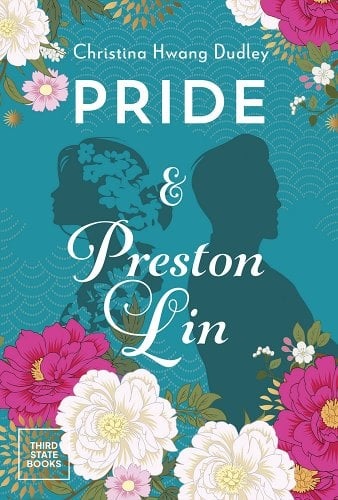 Book you're an evangelist for:
Book you're an evangelist for:
My Family and Other Animals by Gerald Durrell. Words cannot describe how I love this hilarious memoir of the Durrells in their time on Corfu between the wars. (Not to be confused with that abomination of a TV "adaptation" The Durrells in Corfu, which had nothing to do with the book besides character names.) Little Gerry, the budding naturalist, and his sidekick dogs and "Magenpies" are sheer delight.
Book you've bought for the cover:
They're always coming out with these gorgeous Jane Austen editions, and I covet them all. I'm a sucker for floral covers.
Book you hid from your parents:
Gone with the Wind by Margaret Mitchell. I have no idea why, since my mom liked the book and movie as well. I think it was because I was fascinated by the "She was darkness and he was darkness" sex scene, which is so incredibly tame nowadays. Now you have to hide it because it's so politically incorrect!
Book that changed your life:
Jung Chang's Wild Swans. I grew up knowing my family had fled communism, landing in the Midwest, where my parents met, but this was the first book I ever read about China before, during, and after. It not only brought family stories to life but utterly demolished me.
Favorite line from a book:
This is constantly changing, but I went on a Raymond Chandler binge, and he was full of delights like this one from The Lady in the Lake: "She put a firm brown hand out and I shook it. Clamping bobbie pins into fat blondes had given her a grip like a pair of iceman's tongs."
Five books you'll never part with:
These would have to be some of the books I re-read every several years, just for the joy of it: Austen's Persuasion, Trollope's Barchester Towers, Eva Ibbotson's The Morning Gift, Daniel James Brown's The Boys in the Boat, and Sir Walter Scott's Ivanhoe!
Book you most want to read again for the first time:
Ooh, probably Pamela Kaufman's The Shield of Three Lions. I found it in a bookshop in London when it was new, and her vivid writing time-machined me to medieval England. My first and most immersive experience of historical fiction.
Books that made you cry your eyes out:
There's nothing like a good tearjerker, except I always seem to get to the saddest part when I'm reading in public. Mortifying. Peace Like a River by Leif Enger was one of those times. Anything by Khaled Hosseini brings on the waterworks. Laura Hillenbrand's Unbroken, which could have been called Broken for 95% of the book.
Book Candy
Book Candy
Vernalagnia & Reverdie, for example. Mental Floss looked up 18 words to welcome spring.
---
"Stephen King, Shakespeare, and many writers agree: eclipses are doom," Atlas Obscura noted.
---
For Women's History Month, the New York Public Library's staff is highlighting "absorbing fiction based on the fascinating lives of real women from history."
Annie Bot
by Sierra Greer
Sierra Greer's timely and intimate debut, Annie Bot, digs deeply into gendered power relations through the lens of a gradually developing AI who is eager to please her owner. Greer's novel reads as one part slow-burn thriller and one part meditative relationship drama, often forgoing the spectacle of AI for the humanist questions it raises.
All Annie has ever wanted to do is make her owner, Doug, happy. Annie is a Stella, a fully functioning, female-modeled AI, originally programmed to operate in one of three modes: as a housekeeper, cook, or "Cuddle Bunny." But Doug recently switched her to the autodidactic mode. Now, everything is different. Annie's skill set is more flexible, her ability to learn and grow is advancing quickly, and she's conscious in a way that she wasn't before. Better still, Doug says he likes her this way, that he wants her to be more human. And the only thing that hasn't changed is that Annie wants whatever Doug wants.
But as Annie gradually learns to be more human, she begins to recognize the contradictions between what Doug says he wants and how he reacts to her insights, imperfections, and unpredictable responses. As the tensions within their relationship pile up--and Doug's negative reactions to her become increasingly painful--Annie begins to wonder what world might exist beyond the confines of his home and what her role in such a world might be.
Greer brings Annie's burgeoning consciousness to life with mesmerizing clarity, unspooling the minute details of her daily enlightenments and confusions in ways that makes them more relatable than other-ed. Often, her observations serve as fleeting revelations for readers as well. For instance, Annie notes how "humans talk about their lives with myopic intensity, sharing singular, subjective opinions as if they are each the protagonist of their own novel." It's impossible not to realize alongside Annie the inevitable level of self-absorption that self-awareness can bring. In this way, Annie as an AI serves as an ideal self-aware protagonist: one who is programmed to want, but capable of learning and changing the focal point of her own tumultuous journey the second she comes to consciousness. Even more so, and despite her AI design, Annie proves herself from page one to be first and foremost a compelling protagonist, one readers can empathize with, cringe alongside, and fear for.
But where Annie is an ideal protagonist, Greer smartly steers away from casting Doug as her predictable antagonist. Certainly, he plays the role well in moments of his own fear, anger, and uncertainty. But Greer treats Doug with the same nuanced sensitivity that she uses when handling Annie; he learns and changes at the same time as he, perhaps even more so than Annie, is forced to become self-aware of his own shortcomings. In this way, Greer's emotionally acute novel rejects the false binary of good and evil, right and wrong, as deftly as it rejects the binary of human and nonhuman.
Annie Bot maintains a crisp pace and steadily builds tension through its claustrophobic setting and Annie's own uncertain future. Greer's direct and concise prose often enhances the suffocating atmosphere; just as Annie cannot escape the walls of Doug's home for most of the novel, readers cannot escape the impact of the next sentence, each one delivering another figurative blow to Annie's confidence or certainty. In one tense sequence, Annie's sensitivity to Doug's moods results in a spiral of quick succession: "Obviously, it was a fight. She knew that. Her question was stupid. But she can't figure out what she did to make him so angry, and this puzzle tortures her. She can't fix it, she can't reduce his displeasure when she doesn't know what she did to cause it." This inescapability illustrates Annie's position in Doug's house, which becomes the novel's central tension. Is it possible to escape the power dynamics of intimate relationships? And, if it is, is it worth losing the relationship itself to do so?
While these emotional tensions form the novel's heart, Annie Bot also succeeds in meticulously crafting a fascinating world that seems capable of housing endless other stories and what ifs. Through Annie's journey, readers see not only the corporation that seeks to commodify the results of Doug and Annie's internal conflicts, but also the resulting ethical debates people beyond their household are forced to face daily. Even Annie's Stella functions are custom-created by Greer to push on these questions of ethical and relational limitations. The moments Annie must raise her body temperature because she senses Doug's arousal, or the custom changes Doug can make to Annie's appearance through special-order tune-ups are all technical details. Yet in Greer's clever hands, even the technical becomes achingly indicative of so much more. --Alice Martin
Consciousness Is Always Evolving
An Interview With Sierra Greer
 |
|
| Sierra Greer (photo: Dittmeier) |
|
Sierra Greer is a writer and former high school English teacher. She holds an M.A. in the Writing Seminars from Johns Hopkins University, and lives in rural Connecticut. Her debut novel, Annie Bot (Mariner Books), features a sentient female robot, her human owner, and the developing power dynamics between them.
How did you develop the concept for this novel?
Where something starts is not necessarily where it's going. Annie Bot was not an AI idea in the first place at all. I'm a very organic writer; I don't plan things out. I don't have outlines, typically. I was taking a break from another novel that wasn't working, and I started tinkering around with this consciousness that woke up in a closet. She turned into this robot-maid, and I wrote a short story about her. At the end of that short story, this other robot Annie showed up. Afterward I was really intrigued with this other character--this Annie person--who was much more advanced. I thought she could really be borderline human. What could I do with her if she's got these qualities of being a machine but she's also evolving?
Then I started following Annie's character and she showed up with Doug, her owner. From the very first page, there was this dynamic between them that felt way out of my normal comfort zone. I thought, "I'm not going to tell anybody about this. I'm not going to define it. I'm just going to write this and see what happens." I wrote the first draft and things got so intricate and so complicated and so intriguing between them. I was really satisfied.
Then, of course, people started asking when I first learned about AI. And I did start hearing about Google Brain back in 2018. That was the first time I was aware that there was this machine that taught itself a better way to translate languages. So, I was aware while I was writing Annie Bot that there was curious stuff happening with AI, but it didn't directly inform the novel. I really came to it just from the perspective of a writer trying to follow a really intriguing story.
What was it like crafting a story from the perspective of a character like Annie?
Do you remember reading Flowers for Algernon and there was this character who was a quintessential unreliable narrator who didn't know what his limitations were? I felt like that for Annie. She's not technically a narrator, but the story's told from her perspective. We know as readers what's going on with her, but she herself doesn't know. And to me that's really fascinating: the difference between what she knows as a robot and what I know as a human. The real challenge was to make sure she became more aware gradually. How to deal with this consciousness as she is evolving, as she's different from a human, as she wants to be human? One of the things I remember hearing early on about writing is you need to have a character who really wants something. In this book, Annie really wants to please Doug. And she believes she can please him by becoming more human. But by becoming more human, she becomes someone who's not really who he wants. Playing around with that was fascinating. It made me think a lot about what I want in relationships and what it takes for me to feel human and how I see media portraying relationships where people are not always sensitive or kind to each other.
One other thing, too: it does matter that I was writing this story in the pandemic. Annie and Doug are so closed in in that apartment, and I think I was familiar with that sense of being trapped that we all had back in 2020.
What were some of the larger world-building and technical elements that were most important to you for this kind of story?
That all really evolved, too. There were parts of the book--for instance, when Annie runs away--when I had to contemplate what she was going to do, plot-wise. That's when I had to consider: What is the status of these creatures across the United States? Maybe they have a different status in Las Vegas where they can be prostitutes. Maybe they have a different status in Florida where they need manual labor in fields. Maybe in Canada they're accepted more. That's when I really had to think about how wide-scale the issue was, and I had to figure out each one of those puzzle pieces in order for the story to go forward. The process of it happening, the world-building, was just as intricate and detailed and evolving as her character.
In terms of the bot mechanics, that sort of thing was really fun. I had to decide if she had hair that grows. And then, biologically, does she have fingerprints? DNA? The story needed that. And then I figured out there were different formats of the machine: Abigail, Cuddlebunny, Nannies. I thought it was really interesting that the woman's roles were limited to these three things that were all versions of domesticity, of the private domain and not having outside jobs and not being scientists and not being leaders. And then I realized there needed to be men as well. So, I had to come up with parallel men robots. Every time I came up with another aspect of the robot world, I was chuckling to myself because I was like, "this is kind of playing on what's happening in the real world with real humans." I felt like I could throw that in there without making a big point about it. Because to me that's all background noise to the real story.
How did Doug transform as a character?
He was a very difficult character to balance correctly. There are so many things about him that are awful. But people are not one-sided. People who do terrible things can often do really wonderful things, too. I somehow needed him to be real and believable, and I couldn't have him be believable if he was a consistent asshole. That wouldn't work, and it's familiar. Oh yeah, another man character who's just a jerk. I've seen that in fiction, and I don't think that's fair to men or to women.
I really thought a lot about his family. That doesn't show up much in the book because he doesn't talk about his family. But I know things for him were complicated growing up, and he brings that into his relationship, just like his relationship with his ex clearly impacts his relationship with Annie. He had to keep evolving, I couldn't leave him static.
Really, they changed each other. She clearly had an impact on him. There's a line in the novel where he says something really insightful about how she's actually an extension of him. When I came up with that understanding of the novel, I could have given it to another character. But to me it was really important that it was Doug who made that discovery because it showed there's a lot more going on behind the scenes with him. He's maybe not a guy who wants to talk about his feelings all the time but that doesn't mean he's oblivious. --Alice Martin
Rediscover
Rediscover: Dan Wakefield
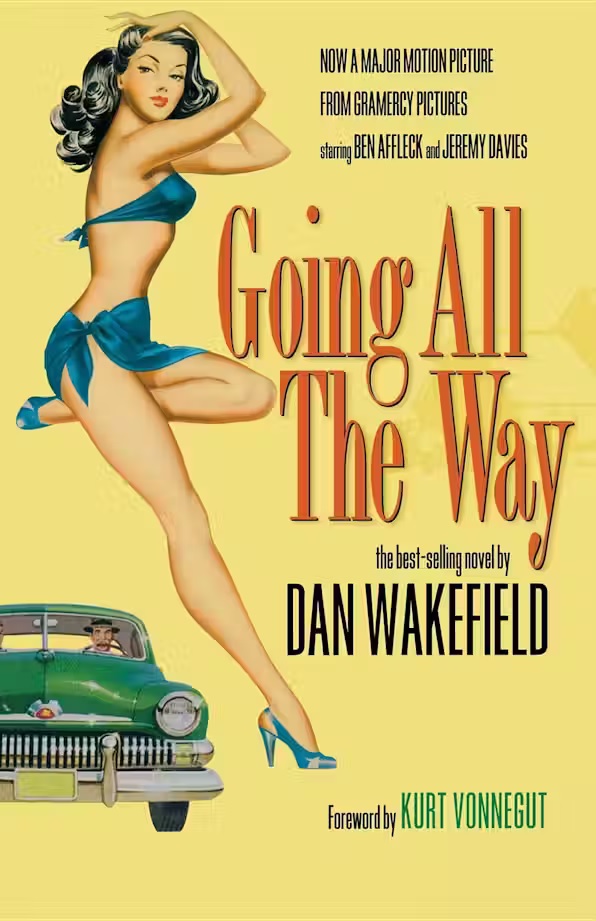 Dan Wakefield, "a protean and prolific journalist, novelist, screenwriter, critic and essayist who explored subjects as diverse as life in New York City in the 1950s, the American civil rights movement, the wounds that war inflicts on individuals and society, and, not least, his personal journey from religious faith to atheism and back again," died March 13 at age 91, the New York Times reported.
Dan Wakefield, "a protean and prolific journalist, novelist, screenwriter, critic and essayist who explored subjects as diverse as life in New York City in the 1950s, the American civil rights movement, the wounds that war inflicts on individuals and society, and, not least, his personal journey from religious faith to atheism and back again," died March 13 at age 91, the New York Times reported.
Wakefield, who published more than 20 books, found acclaim before he was 27 with the publication of Island in the City: The World of Spanish Harlem (1959). His next book, Revolt in the South (1962), explored resistance to the civil rights movement in the old Confederacy. In 1970, his first novel, Going All the Way, was nominated for a National Book Award, drawing praise from critics and major writers, including Gay Talese and Kurt Vonnegut. Wakefield's other novels include Starting Over (1973), Home Free (1977), Under the Apple Tree (1982), and Selling Out (1985).
In Returning: A Spiritual Journey (1988), he recounted using alcohol and drugs to fight off a "sense of blank, nameless pain in the pit of my very being." The next year, in an essay in the Times, he wrote that his way back to belief was marked by logic--he recalled a physicist asking, "Why is there something rather than nothing?"--as well as contemplation.
Wakefield lived his final years in Indianapolis, having moved back there in 2011 after living in Miami for 17 years as a writer in residence at Florida International University. He was still writing and at 90 published a biography for young adults, Kurt Vonnegut: The Making of a Writer.
His death was confirmed by Will Higgins, who from 2016 to 2017 hosted a public radio show with Wakefield, Uncle Dan's Story Hour, on which Wakefield told stories about his life and career from the Red Key Tavern, an old bar in Indianapolis, his hometown.
"What is incredible about Dan is the experiences he had in his writing life and the number of people he called a friend, from Kurt Vonnegut to James Baldwin," Ken Bennett, his attorney, told the Indianapolis Star. "All these literary giants, he associated with them. He's written a number of books, both fiction and nonfiction, used as important reference tools for folks."
Asked to define his philosophy of life, Wakefield quoted Philo, the ancient philosopher of Alexandria, Egypt: "Be kind, for everyone you know is fighting a great battle." As for his life beyond writing, reading and reflecting, he said, "No golf, no horseshoes, no stamp-collecting, no hobbies.... No regrets."
In 1997, Going All the Way was adapted into a film starring Jeremy Davies, Ben Affleck and Rachel Weisz. The novel is available in paperback from Indiana University Press.
| Advertisement Meet belle bear! |


